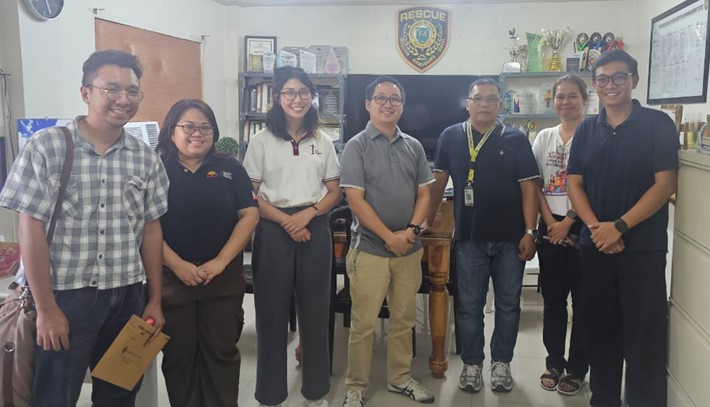By Richard Ybañez, Education Division and Lea Victoria D. Serrano, UP NOAH Center

As part of its commitment to strengthening disaster preparedness and resilience in local communities, the UP Resilience Institute (UPRI) and the Philippine Disaster Resilience Foundation (PDRF) recently visited key institutions in Tarlac to expand the implementation of Project Talagháy. PDRF serves as both the secretariat of the Philippine Preparedness Partnership (PhilPrep) and its private sector representative together with other key actors: the Office of Civil Defense (OCD) representing the government, the Center for Disaster Preparedness representing civil society, and the UPRI serving as the academic pillar of the partnership.
Building Academic Collaborations for Resilience
The delegation visited Tarlac Agricultural University (TAU) and Tarlac State University (TSU) to invite them to participate in Project Talagháy as local academic partners. These meetings emphasized the importance of fostering local research and knowledge by engaging faculty and students in disaster science. Central to these discussions was the plan to install sensors that will produce real-time seismic and hydrometeorological data. These tools are not only critical for community early warning but also open new opportunities for locally led research and innovation in disaster risk reduction.

The involvement of TAU and TSU is envisioned to support the sustainability of the project by ensuring that local expertise is cultivated and continuously developed. By embedding scientific research within local institutions, the project aspires to build a robust, long-term knowledge base rooted in the needs and experiences of Tarlac communities.
Collaboration with the Tarlac PDRRMO
UPRI and PDRF also visited the Tarlac Provincial Disaster Risk Reduction and Management Office (PDRRMO) to gain insight into the province’s current early warning systems and disaster management infrastructure. Through the PGT-UP Resilience Hub, UPRI collaborates with the Provincial Government of Tarlac (PGT), fostering direct links between academic works and government initiatives for resilience-building efforts. This partnership also strengthens the integration of Project Talagháy into the province’s strategies, ensuring alignment with local practices and resources for long-term sustainability. During the visit, the team observed existing equipment and protocols, identifying potential areas of synergy with Project Talagháy. The insights gained will guide the project’s design to ensure it complements and enhances existing DRRM capacities at the provincial level.

About Project Talagháy
Project Talagháy—derived from a local word meaning “to anticipate”—aims to enhance the early warning systems of two barangays in Tarlac City. The project integrates community-centered preparedness approaches with modern technology to support timely and informed decision-making during disaster events. The use of web-enabled Internet-of-Things (IoT) sensors serves to strengthen these early warning systems by enabling real-time data collection and transmission. The project also includes capacity-building components such as training sessions on the Citizen Science Seismic Network and the UP NOAH Center’s Impact-Based Forecasting Module.
By actively involving academic institutions, local government agencies, private sector partners, and civil society organizations, Project Talagháy promotes a model of localized disaster preparedness that is inclusive, data-driven, and sustainable. The initiative underscores the value of multisectoral collaboration in building resilience from the ground up.
For more updates on Project Talagháy and the UP Resilience Institute’s initiatives, visit resilience.up.edu.ph.
